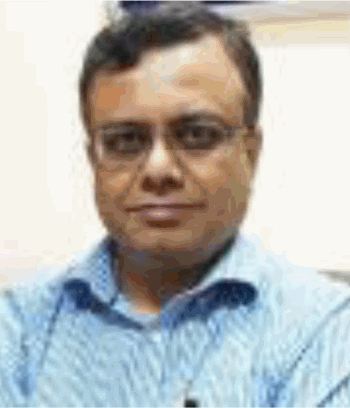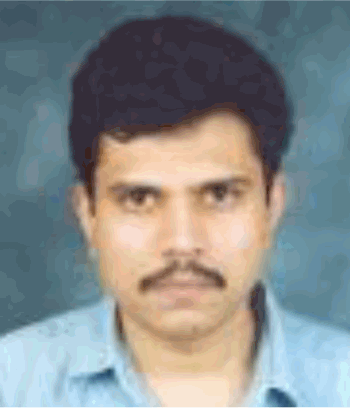The current issue of the IETE Journal of Research (Vol 69, No.7, July 2023) contains 70 articles. These articles present ongoing studies and new developments taking place in the broad areas of biomedical engineering, communications, computer science, control systems, electromagnetics, electronics circuits devices & components and power electronics.
In this issue, eleven articles on biomedical engineering are published. The reported research focuses on MRI multimodal imaging and the application of classification models based on belief theory to existing cancer databases, segmentation of pancreatic lesions, providing treatment magneto-cardiography inverse problems, tuberculosis diagnostics using computer-aided systems, deep brain simulation coding, development of low-cost voice-controlled prosthetic arm, breast thermogram classification using artificial neural network, segmentation of cervical cells and lung tumor segmentation from X-ray imaging; these are a few of the topics that have been addressed by the researchers.
The 18 papers in this issue cover a wide range of topics within the field of communications. The work reported focusses on hybrid positioning capabilities of commercially available GNNS modules, beaconing for driver behavior in VANETs, application of Haar wavelet to computational electromagnetic problems, blind spot recovery algorithm using AeriaBTS, use of generalized pseud-range positioning to improve accuracy of airborne navigation systems, spectrum estimation for cognitive radio systems, reconstruction of gene regulatory network using Bayesian model approach, keywork spotting systems, use of sine and cosine algorithms for efficient feed-forward neural networks, LDPC codes using rational functions, novel MAC protocols for cognitive radio networks, frequency domain approach based channel estimation in hybrid millimeter wave MIMO systems, new filters using third kind Chebyshev polynomials, split-logical algorithms for covert and secure communication, signal generation using direct digital synthesizers, miniaturized band pass filters for WLAN and Wi-Max bands, anti-jamming using Neural networks, and non-linear signal construction techniques.
Two articles on computers are published in this issue, one on authenticated key exchange protocol for edge computing systems and the other on flaw identification and localisation in products.
This issue also includes 5 papers covering various aspects of control systems. The research presented in these articles covers a wide range of topics, including adaptive control of non-minimum phase systems, digital fractional order PID controller for permanent magnet DC motors, internal model control of MIMO systems, tuning of PID controllers, and sliding mode controllers of nonlinear systems.
The issue features eight papers on various topics related to electromagnetics. Novel rat race couplers with harmonic suppression, high isolation MIMO antennas, PIFA antennas for WLAN and 5G applications, filtering antennas, coplanar feed antennas for dual band applications, monopole antennas for ultra-wide band applications, wideband, low loss power dividers, and conformal antennas are among the research topics covered.
The three articles in this issue each fall under the general category of electronics, circuits, devices, and components. These articles discuss ongoing research on low power voltage-controlled ring oscillators with tuning, rectangular core shell double gate junction-less transistors, and the design of high-speed master slave D flip flops utilizing FinFET technology.
There are 23 research articles in this issue specifically related to power electronics. The work reported focusses on enhancement of output power and efficiency using hybrid photo voltaic configurations, renewable energy systems for unelectrified remote area, control of steam pressure in coal-fired power plant boilers, controllers for hybrid energy storage for powered electric vehicles, wind energy conversion systems, solving optical power flow problems using unified power flow controllers, power system frequency restoration problems, direct drive wave energy conversion, techniques for power enhancement in large size photovoltaic arrays, application of graph theory to analyze three-phase asynchronous generator, studies on photo-voltaic array positioning, analysis of cascaded H-bridge multilevel converters, energy harvesting prototype design and characterization, monitoring of real time grid system parameters using SOC FPGA, analysis and parameter estimation of photovoltaics, application of fuzzy controllers in unified voltage frequency control of power systems, interfacing of solar panel and grid with electric vehicles, cost effective energy distribution scheme, automatic generation control, fuzzy tolerant tracking control of photo voltaic pumping system & coordinated frequency and voltage control of combined gas turbine.
Additional information
Notes on contributors

Shiban K Koul
Shiban K Koul is currently an emeritus professor at the Indian Institute of Technology, Delhi. He served as deputy director (Strategy and Planning) at IIT Delhi from 2012-2016 and mentor deputy director (Strategy & Planning, International Affairs) at IIT Jammu from 2018-2021. He also served as the chairman of Astra Microwave Products Limited, Hyderabad from 2009-2019 and Dr R P Shenoy Astra Microwave chair professor at IIT Delhi from 2014-2019. His research interests include RF MEMS, high frequency wireless communication, microwave engineering, microwave passive and active circuits, device modelling, millimetre and sub-millimetre wave IC design, body area networks, flexible and wearable electronics, medical applications of sub-terahertz waves and reconfigurable microwave circuits including miniaturized antennas. He successfully completed 38 major sponsored projects, 52 consultancy projects and 61 technology development projects. He has authored/co-authored 601 research papers, 23 state-of-the art books, 4 book chapters and 2 e-books. He holds 26 patents, 6 copyrights and one Trademark. He has guided 30 PhD thesis and more than 100 Master’s theses. He is a Life Fellow of IEEE and Fellow of INAE and IETE. He is the chief editor of IETE Journal of Research, associate editor of the International Journal of Microwave and Wireless Technologies, Cambridge University Press. He served as a Distinguished Microwave Lecturer of IEEE MTT-S for the period 2012-2014.
Recipient of numerous awards including IEEE MTT Society Distinguished Educator Award (2014); Teaching Excellence Award (2012) from IIT Delhi; Indian National Science Academy (INSA) Young Scientist Award (1986); Top Invention Award (1991) of the National Research Development Council for his contributions to the indigenous development of ferrite phase shifter technology; VASVIK Award (1994) for the development of Ka- band components and phase shifters; Ram Lal Wadhwa Gold Medal (1995) from the Institution of Electronics and Communication Engineers (IETE); Academic Excellence Award (1998) from Indian Government for his pioneering contributions to phase control modules for Rajendra Radar, Shri Om Prakash Bhasin Award (2009) in the field of Electronics and Information Technology, VASVIK Award (2012) for the contributions made to the area of Information, Communication Technology (ICT) and M N Saha Memorial Award (2013) from IETE.
His name has recently figured in the Scopus Elsevier top 2% Scientists under the Category “Year 2021”.E-mail: [email protected]

Arun Kumar
Arun Kumar is with the Centre for Applied Research in Electronics, Indian Institute of Technology, Delhi since 1997.He became professor in 2008 and has served as head of Centre for more than 7 years. He obtained the BTech, MTech and PhD degrees from Indian Institute of Technology Kanpur in 1988, 1990 and 1995, respectively. He was visiting researcher at the University of California, Santa Barbara, USA from 1994 to 1996 before joining IIT Delhi. His research interests are in digital signal processing, underwater and air acoustics, human and machine speech communication, and multi-sensor data fusion.
Professor Arun Kumar is an inventor on10 granted US patents. He has guided 16 PhD theses and 180 Master’s theses. He has authored/co-authored 160 papers in peer reviewed journals and conferences. He has been project investigator/co-investigator for 72 funded R&D projects from industry and government. These projects have led to several technology and know-how transfers. Many of the technologies co developed by him are deployed in the field and are in practical use. Professor Arun Kumar has served on several technical and organization committees of conferences, and on national level committees in electronics and defence fields. He is co-founder and director of a company that develop signal processing and AI based technologies and products for speech-based and multi-modal human and machine. He is currently deputy editor-in-chief of IETE Journal of Research.E-mail: [email protected]

Ranjan K Mallik
Ranjan K Mallik (FIETE, FIEEE, FIET, FTWAS, FNAE, FNA, FNASc, FASc) is an Institute chair professor in the Department of Electrical Engineering, Indian Institute of Technology (IIT) Delhi. He received the BTech. degree from IIT Kanpur and the MS and PhD degrees from the University of Southern California, Los Angeles, all in electrical engineering. He has worked as a scientist in the Defence Electronics Research Laboratory, Hyderabad, India, and as a faculty member in IIT Kharagpur and IIT Guwahati. His research interests are in diversity combining and channel modelling for wireless communications, space-time systems, cooperative communications, multiple access systems, power line communications, molecular communications, difference equations, and linear algebra. He is a recipient of the Shanti Swarup Bhatnagar Prize, the Hari Om Ashram Prerit Dr Vikram Sarabhai Research Award, the Khosla National Award, the IETE Ram Lal Wadhwa Award, the IEI-IEEE Award for Engineering Excellence, and the JC Bose Fellowship. He is a Member of Eta Kappa Nu, and a Fellow of IEEE, the Indian National Academies INAE, INSA, NASI, and IASc, TWAS, the West Bengal Academy of Science and Technology, IET (UK), IETE (India), The Institution of Engineers (India), and the Asia-Pacific Artificial Intelligence Association. He served as an area editor and an editor for the IEEE Transactions on Wireless Communications, and as an editor for the IEEE Transactions on Communications. He was a Technical Program Committee (TPC) co-chair for the Wireless Communications Symposium of IEEE GLOBECOM 2008 and IEEE ICC 2010, a TPC co-chair for the PHY Track of IEEE WCNC 2013, and a TPC co-chair for the Communication Theory Symposium of IEEE ICC 2021. He is currently deputy editor-in-chief of IETE Journal of Research.E-mail: [email protected]
